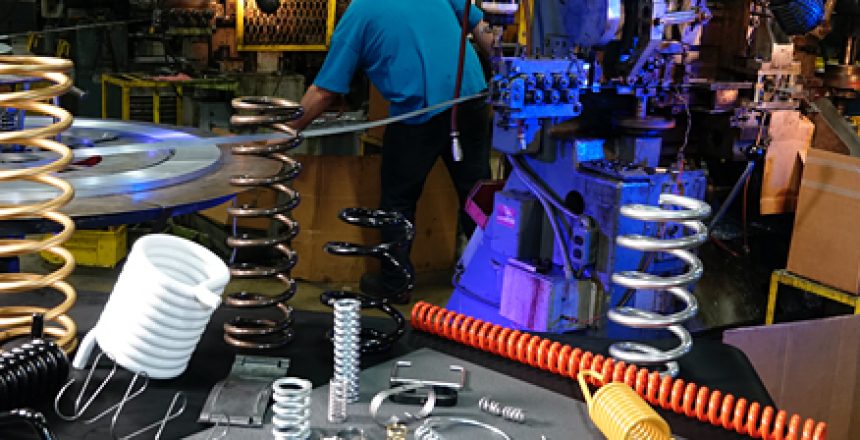There really isn’t just one ordinary spring. Springs need to be used to pull, push, wind, support, lift, or protect. Because springs can be used in varied applications, there need to be different types of springs.
Even with so many springs, there are still a couple common springs that you will come across, and your selection of spring depends on the amount of force you need, or the torque required for the operational conditions.
One of those more common springs is the compression spring, which provides an opposing force when compressed. They are primarily used in manufacturing applications, where a variable and opposing force is required between components. The space between coils compresses under an increasing load until the spring’s compressed length is reached when the coils touch.
Conversely, extension springs provide an opposing force when stretched. The ends of the spring are usually formed to the shape of a hook, and there are many sizes, spring rates, and materials available for extension springs.
To resist torque loads, you will need a torsion spring. Torsion springs are used when manufacturing applications need motion controls, because the spring will act in a radial direction in applying torque. Clocks and watches require torsion springs, which are are wound in concentric spirals.
Other types of springs that hold unique purposes in applications include constant force springs, die springs, and augers. When you need the right spring for the right job, consult Mid-West Spring and Stamping.
Mid-West Spring and Stamping is committed to creating more value for our customers with fewer resources through continuous improvement and the elimination of waste. Join the multitudes of customers that rely on us to optimize the fit, form, and function for their desired outcomes at a competitive cost. Request a quote today, or call us at 800-424-0244.

